










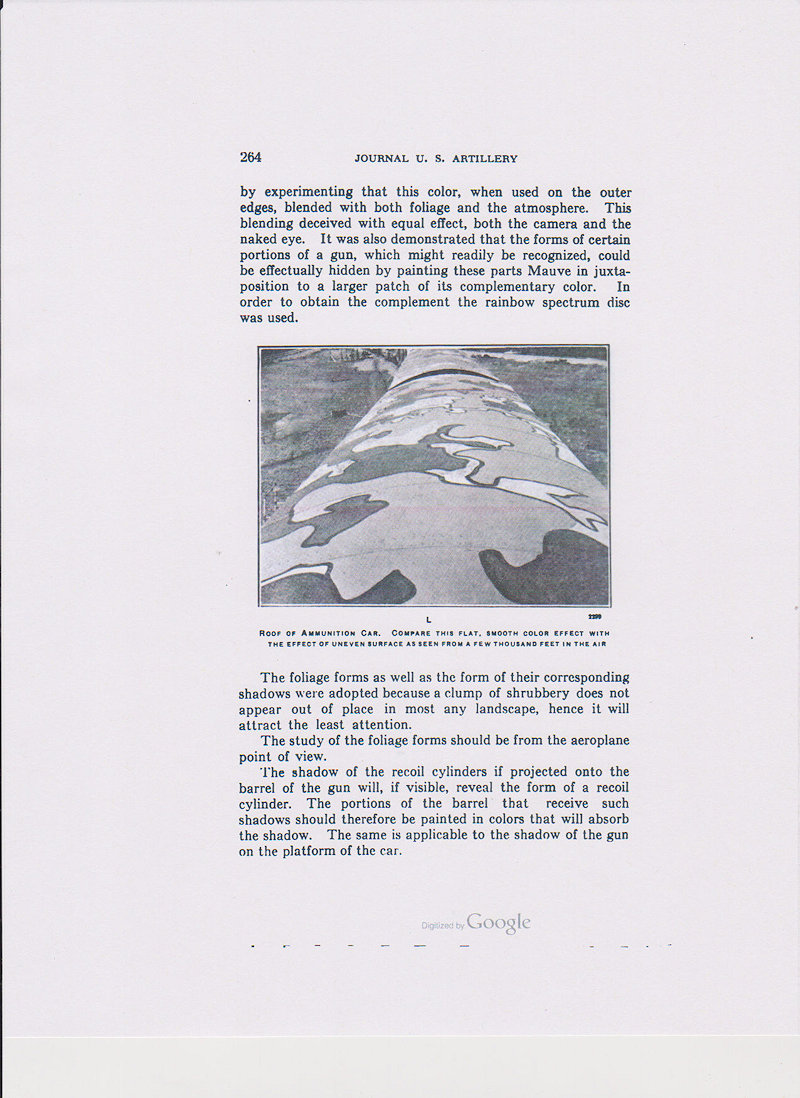
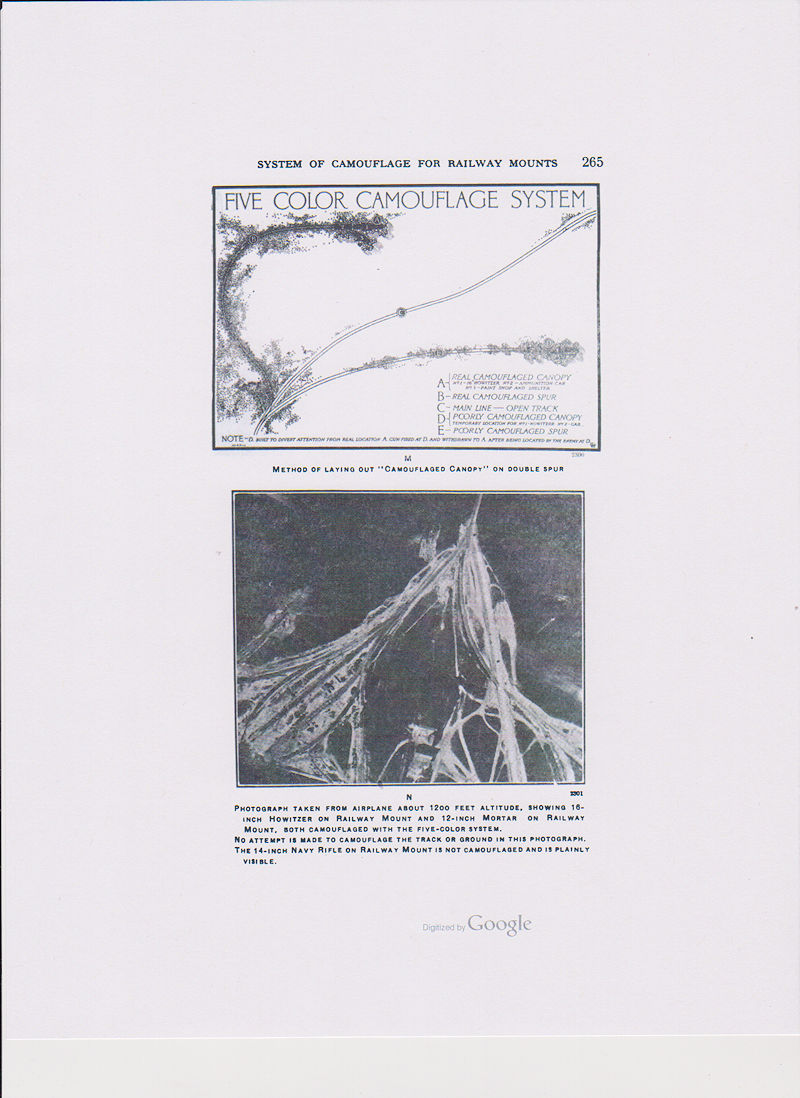


US WW1 Era Camouflage
The Five Color System consist of green, yellow, cream, mauve, and its compliment brown, plus black as a shade to separate the colors. This camouflage system is intended for heavy railway mounts such as railway guns but not for field artillery. (see page 253 & 262 below)
The Three Color System is intended for field artillery camouflage. It consist of the colors green, yellow, and cream with black as a shade to separate the colors. (see page 256 below)
 |
 |
 |
 |
 |
 |
 |
 |
 |
 |
 |
 |
 |
 |
 |
Below: The caisson color print is from the American Car & Foundry book illustrating the manufacturing process for American limbers and caissons. The three colors consist of Green, Yellow and Cream with Black added as a shade. This is the same pattern described above in the Journal of US Artillery article. On the photos below notice the vehicles are painted in the "Three Color System" at the Detroit factory before being shipped to Army units. All the vehicles appear to be painted in exactly the same pattern. The railway gun in the color print is painted in the "Five Color System" that is the main subject of the article above. The Five Color System consist of Green, Yellow, Cream, Brown, and Mauve, with Black as a shade.
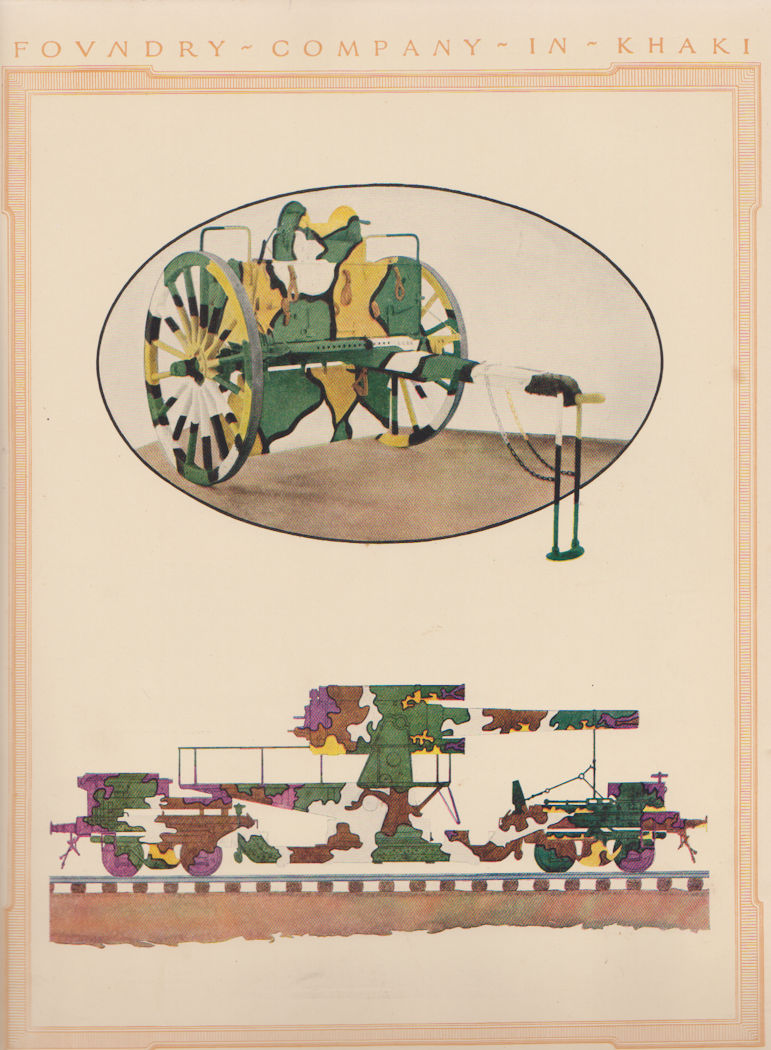 |
Below: A WW1 Era photo of a production line for limbers at the American Car and Foundry factory. This is from the company’s book
 |
 |
Below: An official US Army photo of an M1918 Caisson with the same pattern of camouflage applied as seen in the American Car and Foundry color plates
 |
Below: Front view of the M1918 Caisson recently painted Three Color Camouflage in the Lovett collection
 |
Below: Rear, and side views of the M1918 Caison Limber in the Lovett collection, recently painted in the three color system
 |
 |
|---|
The Painting Instruction for Camouflaging Vehicles below calls out the equipment painted in the same pattern, as was done in the American Car and Foundry factory, as an error. (See page 12 below) However, this is what the equipment actually looked like in service. In the reference below, the Three-Color System is not named but is described. (see page 7) Also notice that the reference below contradicts the Journal of U.S. Artillery article above counting black as a color not as is correctly stated in the article above, as a shade. (See pages 8 & 9) The reference below also makes no mention of the Five Color Camouflage System nor does it discribe it.
 |
 |
 |
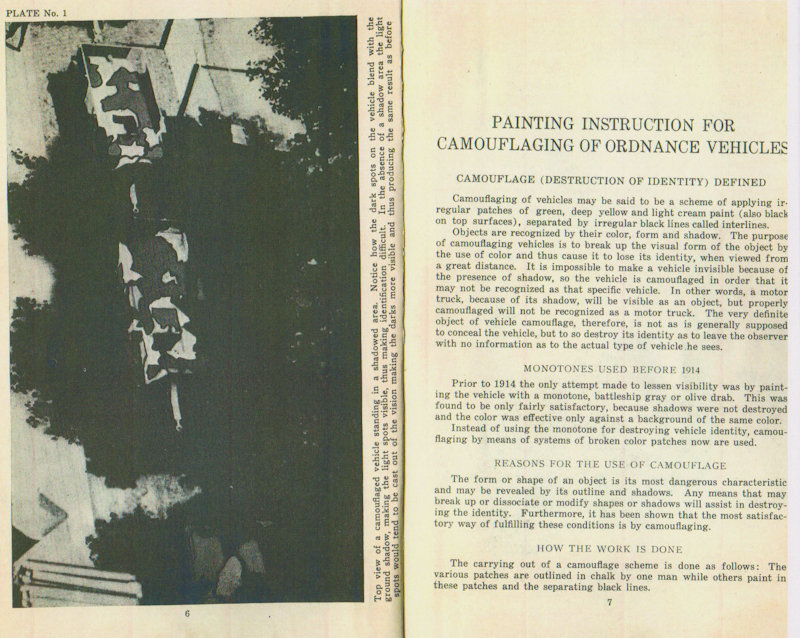 |
 |
 |
 |
 |
 |
 |
 |
Below: A US M1902 Field Gun's Caisson depicted by painting over pencil sketch. This is a study of camouflage drawn and painted by Charles E. Burchfield while serving at Fort Jackson S.C. in 1918. (Reproduced with permission of the Charles E. Burchfield Foundation)
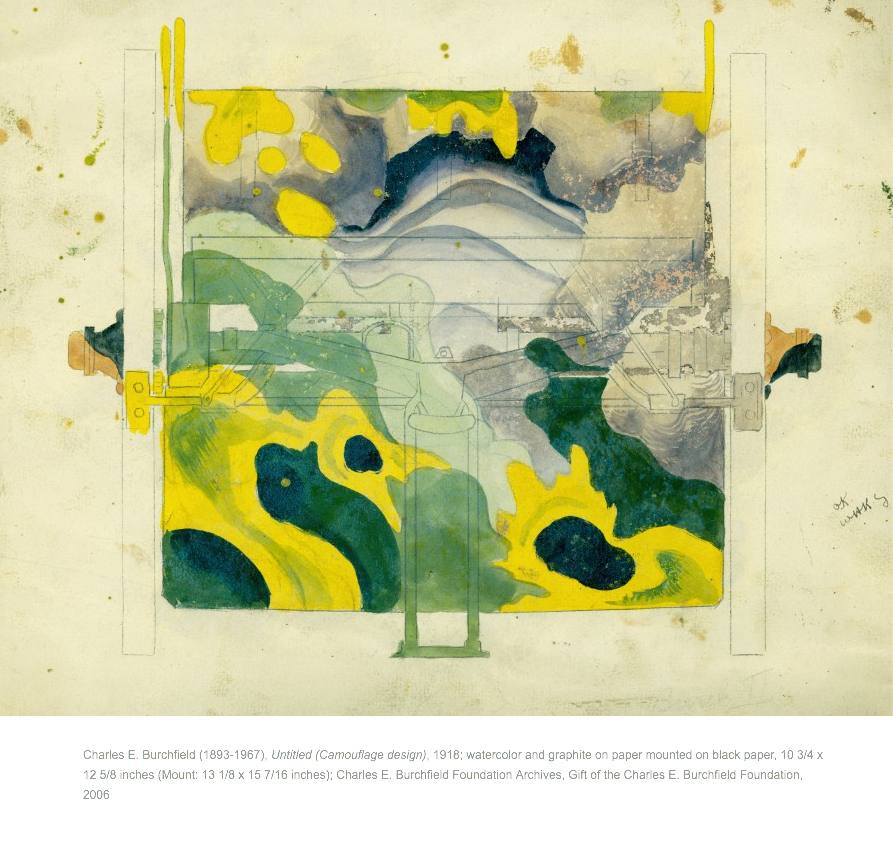 |
US Army camouflage has been described and illustrated above in the Journal of the US Artillery article, System of Camouflage for Railway Mounts and in the US Ordnance manual Painting Instruction for Camouflaging of Ordnance Vehicles. The painting above was made by Charles E. Burchfield, an artist that was drafted into US Army service in WW1. He is a pioneer of the Cubist art movement in the US. It is unknown if the painting is part of a unit sanctioned guide for applying camouflage or if this was simply his own interpretation. Either way, it shows an interesting variation on the Three Color System. The colors are two shades of green (dark green, and light green), yellow, cream, and two shades of grey (light grey and dark grey) plus black. The grey shades certainly appear to give the illusion of clouds. Neither the Three Color nor the Five Color Systems incorporated this technique. I have been unable to find any period photographs of this system applied to an actual vehicle and it is possible none ever were.